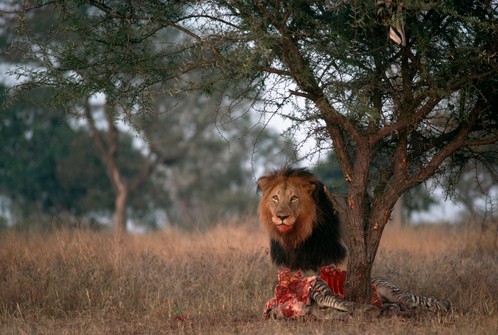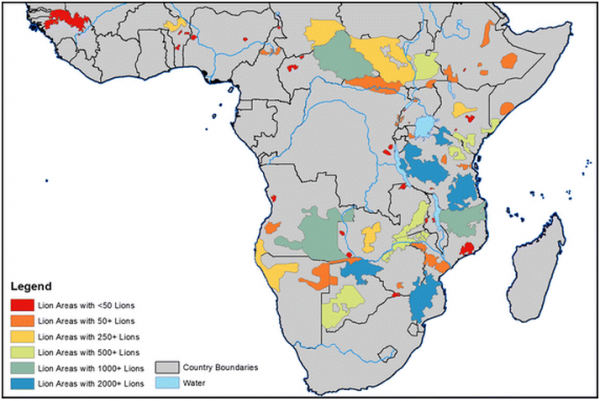雅思阅读精选:旷野的屈服 非洲狮数量锐减

新东方网雅思频道全新推出“每日雅思阅读精选”栏目,我们将为大家精心挑选国外网站上的优秀文章供考生们进行阅读练习,帮助大家提高雅思阅读水平,每天读几篇文章,每天有一点提高,相信不久之后,雅思阅读考试将不再是困扰考生们的难题。
推荐阅读方法:首先快速阅读全文,掌握文章大意,提高阅读速度;再进行精读训练,学习其中的词汇和语言的用法。
2013年1月22日雅思阅读精选:
From:National Geographic, December 6, 2012
Lion Numbers Plunge as African Wilderness
Succumbs to Human Pressure
旷野的屈服 非洲狮数量锐减

Only 32,000 Lions Remain out of 100,000 Roaming Africa in the 1960s
The king of the African savannah is in serious trouble because people are taking over the continent’s last patches of wilderness on unprecedented scale, according to a detailed study released this week.

A male lion feeds in South Africa's Kruger National Park. The Kruger Park area is one of only ten strongholds left for lions in Africa. National Geographic photo by James P. Blair.
The most comprehensive assessment of lion (Panthera leo) numbers to date determined that Africa’s once-thriving savannahs are undergoing massive land-use conversion and burgeoning human population growth. The decline has had a significant impact on the lions that make their home in these savannahs; their numbers have dropped to as low as 32,000, down from hundreds of thousands estimated just 50 years ago.
The study, funded in part by the National Geographic Big Cats Initiative, was published online in this week’s journalBiodiversity and Conservation.
Some 24,000 of the continent’s remaining lions are primarily in 10 strongholds: 4 in East Africa and 6 in southern Africa, the researchers determined. Over 6,000 of the remaining lions are in populations of doubtful long-term viability. Lion populations in West and central Africa are the most acutely threatened, with many recent local extinctions, even in nominally protected areas.

Population size classes of all lion areas. Figure used in the research study ,courtesy of Stuart Pimm and other authors/"Biodiversity and Conservation" journal.
“These research results confirm the drastic loss of African savannah and the severe decline in the number of remaining lions,” said Big Cats Initiative (BCI) Grants Committee Chair Thomas E. Lovejoy, University Professor for Environmental Science & Public Policy at George Mason University and Biodiversity Chair of The Heinz Center. “Immediate and major action is required to save lion populations in Africa.”
“Immediate and major action is required to save lion populations in Africa.”
African savannahs are defined by the researchers as those areas that receive between 300 and 1500 mm (approximately 11 to 59 inches) of rain annually. “These savannahs conjure up visions of vast open plains,” said Stuart Pimm, co-author of the paper who holds the Chair of conservation at Duke University. “The reality is that from an original area a third larger than the continental United States, only 25 percent remains.” In comparison, 30 percent of the world’s original rain forests remain.
Lions in West Africa are at highest level of risk, Pimm and the other researchers found. “The lions in West Africa are essentially gone,” said Pimm. “Only a radical effort can save them at this stage.”
Stuart Pimm is also a member of the Big Cats Initiative Grants Committee and a regular blogger for National Geographic News Watch. We interview him here about the research released this week.
视频学习
我考网版权与免责声明
① 凡本网注明稿件来源为"原创"的所有文字、图片和音视频稿件,版权均属本网所有。任何媒体、网站或个人转载、链接转贴或以其他方式复制发表时必须注明"稿件来源:我考网",违者本网将依法追究责任;
② 本网部分稿件来源于网络,任何单位或个人认为我考网发布的内容可能涉嫌侵犯其合法权益,应该及时向我考网书面反馈,并提供身份证明、权属证明及详细侵权情况证明,我考网在收到上述法律文件后,将会尽快移除被控侵权内容。



